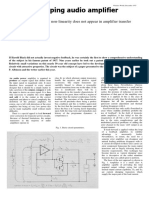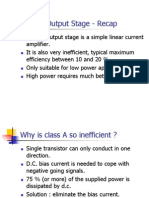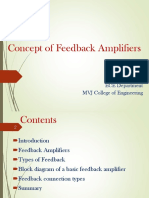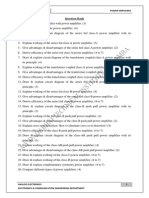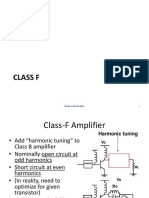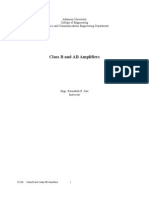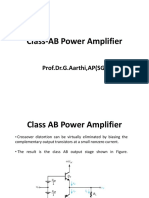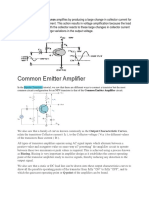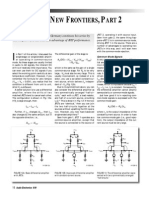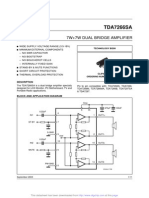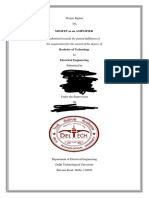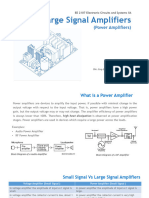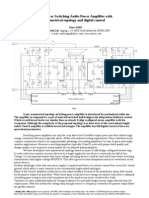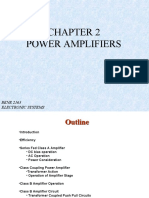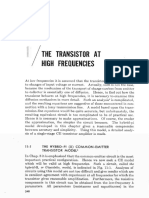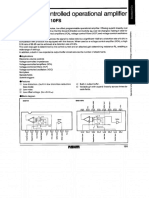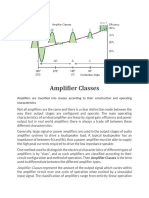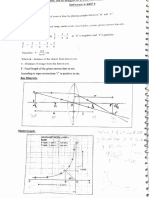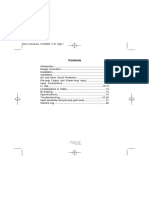0% found this document useful (0 votes)
252 views22 pagesAmplifier Classes Explained
This document discusses different classes of amplifiers based on their operating characteristics. It describes Class A amplifiers as having the highest linearity but lowest efficiency due to always conducting current. Class B amplifiers improve efficiency but introduce distortion at zero crossings. Class AB balances efficiency and linearity by slightly biasing transistors. Class C has the highest efficiency but poorest linearity due to short conduction angles, making it unsuitable for audio amplification.
Uploaded by
Lycka TubierraCopyright
© © All Rights Reserved
We take content rights seriously. If you suspect this is your content, claim it here.
Available Formats
Download as DOCX, PDF, TXT or read online on Scribd
0% found this document useful (0 votes)
252 views22 pagesAmplifier Classes Explained
This document discusses different classes of amplifiers based on their operating characteristics. It describes Class A amplifiers as having the highest linearity but lowest efficiency due to always conducting current. Class B amplifiers improve efficiency but introduce distortion at zero crossings. Class AB balances efficiency and linearity by slightly biasing transistors. Class C has the highest efficiency but poorest linearity due to short conduction angles, making it unsuitable for audio amplification.
Uploaded by
Lycka TubierraCopyright
© © All Rights Reserved
We take content rights seriously. If you suspect this is your content, claim it here.
Available Formats
Download as DOCX, PDF, TXT or read online on Scribd
/ 22



